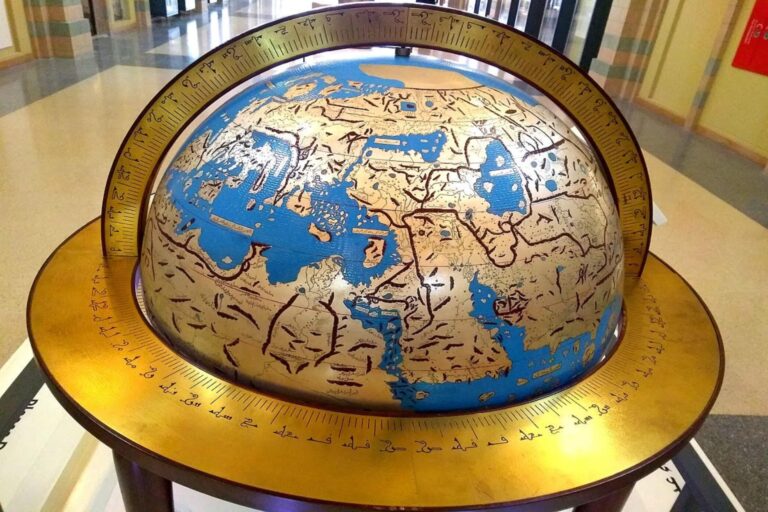Dr. Joshua Krasna recently completed a 30 year career in government service in Israel, which included many years as an analyst of major foreign policy and national security issues, as well as a diplomat in two countries. He received his Ph.D. in Political Science in 1999 and is a 1986 alumnus of Johns Hopkins SAIS.
Review of Curtis R. Ryan, Jordan and the Arab Uprisings: Regime Survival and Politics Beyond the State (New York: Columbia University Press), June 2018
Hardly a year goes by without learned assessments that under the pressure of internal and regional challenges, the Hashemite Kingdom of Jordan’s luck may run out. However, this “weak man” of the Middle East continues to be one of the region’s islands of relative stability.
This is not a matter of luck. The precariousness and seeming artificiality of the Jordanian kingdom—written into being as a concept in 1921 and as a state in 1946, annexing and then losing the West Bank, buffeted by two influxes of Palestinian refugees in 1948 and 1967—ingrained in its ruling family awareness of the need for a comprehensive approach to regime security. This approach includes creating a unified national identity with the Hashemite dynasty[1] at its core; constantly scanning its internal and external environment with the help of a ubiquitous national security apparatus; using cooptation, minimum coercive force, and cautious reform from above to neutralize unrest; and creating a polity characterized by both structural and ideological flexibility.
The internal workings and dynamics of the Kingdom, however, remain rather opaque, and are often approached in a simplistic manner. Curtis Ryan, Professor of Political Science at Appalachian State University, has written an excellent book, Jordan and the Arab Uprisings: Regime Survival and Politics Beyond the State, which analyzes what happened in Jordan before, during and after the Arab Uprisings, and explains how Jordan has thus far weathered the storm that brought down other regimes in the region.
Ryan is extremely well-informed, and the book reflects a deep immersion in (and obvious affection for) Jordanian political society, and an estimable web of contacts among Jordanian intellectuals, activists, journalists, politicians, and former and serving government officials. This includes the King and Queen, and other members of the Royal Family. Part of its readability (and resonance with an international relations scholar) is that Ryan’s approach is rooted, fairly uniquely, in political science, blending detailed, closely-observed and documented contemporary political history with cogent, relevant analysis.
Ryan stresses the continuities between the protests and activism of 2011 and 2012, and those of April 1989, when riots and unrest erupted due to government austerity measures. These occurred, in both cases, primarily in the ethnically “East Jordanian” South, which had until 1989 been considered the most loyal and quiescent areas of the kingdom, and therefore reflected a new source of domestic challenges to regime security. In both cases, the respective Kings responded by dismissing the Prime Minister—a shock absorber between the King and the people—and initiating a broad program of political and economic liberalization. Ryan delineates well the ongoing tension within the regime itself between reformist and reactionary tendencies, and maps their ebb and flow through the changes in government and the much-tinkered-with electoral system.
He also sketches well the gap between regime figures, who feel that measured but substantial progress is being made, and the activists, who see no real change. Ryan views the period from 1989 until now as a long cycle of reform from above and social protests and activism, causing “considerable movement and noise, but with little actual advancement or meaningful change.”[2] He notes that half of Jordan’s population was born after 1989, and “have literally been waiting their entire lives for more meaningful change.”[3] The cyclical protests demand more political and less economic liberalization, since the proximate cause of much unrest is the economic hardship associated with IMF economic adjustment plans which undercut social safety nets, and corruption engendered by neo-liberal privatization and crony capitalism. Apart from a few examples of activists pushing the envelope too far in the height of 2011-2012, most Jordanians seem loyal to the monarchy, “to a Jordan that is not only Jordanian but Hashemite.”[4] He notes, however, that criticism of neoliberalist policies and especially of corruption sometimes came close to the Royal Household.
Ryan’s chapter on the “new activists” is particularly illuminating. He stresses manifestos published in 2010 by retired servicemen, as well as by thirty-six East Jordanian tribal leaders, which comprised unprecedented attacks on the King’s policies (and his wife, who for them personified the excessive influence of corrupt Palestinian business elites), by groups heretofore considered the bedrock of conservative support for the regime. He analyzes the Hirak movements, a constellation of locally-based grassroots groups, mostly of disaffected East Jordanian youth, which he terms “the most unique feature of Jordan’s Arab Spring experience.”[5] Regarding identity politics, which he calls “the Achilles heel of Jordan,” Ryan notes that Jordanian politics cannot be reduced to the simple binary of Jordanian-Palestinians division (noting inter alia, the prevalence of intermarriage). This fault-line is nonetheless often activated and manipulated, especially by reactionary elements in Jordanian politics, to thwart reform and change.[6] The regime, he notes, attempts for its part to portray itself as a force which unifies the multiple communities into one royalist “family.”
Ryan’s penultimate chapter addresses the interplay between Jordan’s domestic and external environments. He is especially good at portraying the consequences for Jordan of the Syrian refugee crisis, which was mostly shouldered by the North of the country and by Amman. He deftly portrays the tension between fraternal concern and hospitality toward their Sunni brethren, and the exacerbation of existing economic, social and infrastructure (especially water) problems, which led to “refugee exhaustion” and to some anti-refugee sentiment.
The chaos in Jordan’s neighbors, and jihadi terrorist activity within Jordan proper, led to fear of potential spillover into Jordan itself, and exacerbated the regime’s securitizing tendencies. One key point Ryan makes is that Jordan’s diverse opposition is holding its activity in abeyance, but hopes to revive the protest movements and push the regime for further political change, when “Jordan weathers its many regional storms.”[7] These activists fear that the need for Jordan to closely ally its foreign and security policy with more powerful or wealthy Middle East actors, such as Egypt, Saudi Arabia and the Gulf monarchies, may lead the regime to adapt their reactionary, anti-democratic and anti-reform agendas.
In his last chapter, Ryan addresses the future. The Jordanian regime has proved adept at the fine art of muddling through and managing to survive against the odds. “But at some point the odds will change, the strain will become too much, or something will go very wrong,” unless the regime genuinely engages the opposition groups, and shifts the political emphasis “from subjects to citizens.”[8] But, he reaches a guardedly positive conclusion:
To assume “it can’t happen in Jordan” would be hopelessly naïve. But similarly, to assume such an explosion is certainly just as faulty. Since its independence in 1946, rumors of Jordan’s impending death have always turned out to be exaggerated… This doesn’t mean that it won’t at some point be true. But to this point, at least, Jordan has managed to maneuver its way through countless internal and regional crises.[9]
Some sources of Jordan’s strength may even be shortchanged in Ryan’s book, which concentrates on the domestic political scene and provides insight into the changing political dynamics of the kingdom, especially the positions of the new opposition and democratizing activists. His analysis of Jordan’s relations with Israel, for instance, treats the 1994 peace treaty and a more recent gas deal predominantly as instances where the Hashemite regime acted without consultation and against the wishes of the public, and does not address the strategic logic behind the agreements. The Hashemites have been superbly able to alchemize their kingdom’s strategic, social and economic weaknesses into a source of strength on the regional and international scene. They do this by stressing the threats to the kingdom’s stability while proving its value and reliability to the West as a regional ally, thereby securing close, protective, and generous strategic relationships with the United States and the West (including Israel). The key strengths of Jordan are the leadership abilities and canny (though not infallible) strategic thinking of its Kings, their strong sense of their kingdom, alongside with, as Ryan notes, the ultimate loyalty of the people, which is strong but never taken for granted.
Footnotes
[1] The Jordanian royal family are known as the Hashemites (the official name of the country is the Hashemite Kingdom of Jordan), the name of the dynasty stemming from Hussein, Sharif of Mecca in World War I, who trace their lineage to the Prophet Mohammad, and members of which also ruled the Hejaz (1916-1924), Syria (1919-1920) and Iraq (1921-1958).
[2] Curtis R. Ryan, Jordan and the Arab Uprising: Regime Survival and Politics Beyond the State (New York: Columbia University Press, 2018), 172.
[3] Ibid. 173.
[4] Ibid. 220.
[5] Ibid. 65.
[6] Ibid. 91.
[7] Ibid. 77.
[8] Ibid. 220.
[9] Ibid. 221.



